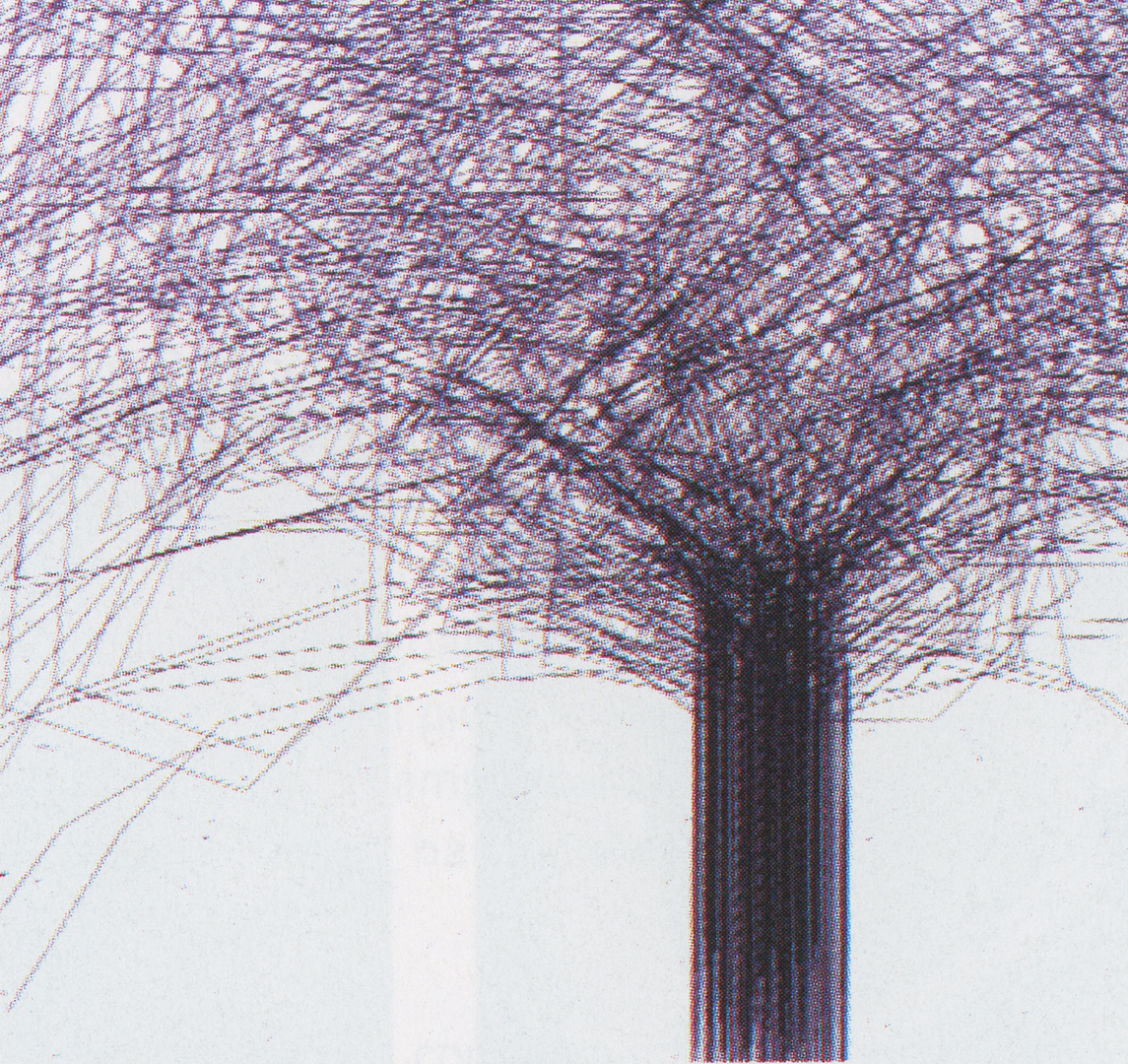Hans E. Dehlinger: strokes_mi31, tree11, baum_V14
Artist(s):
Title:
- strokes_mi31, tree11, baum_V14
Exhibition:
Creation Year:
- 2002
Medium:
- plots on paper, Chinese ink
Size:
- 60 x 50 cm
Category:
Artist Statement:
When walking through a landscape in snow, we observe many types of linear structures. The tree as a metaphor and as an element of landscapes is a familiar image and a poetic reminder to enjoy life. What I am trying to communicate through my work are interpretations of the mysteries and tragedies that surround us.
Computer-generated artwork, based on line drawings, is challenging for a number of reasons. It makes use of line as the characteristic element of the generative process, and the results rely entirely on the calligraphic qualities of the line. Besides the heritage of hand drawings, which we conceive as a fantastically rich universe, we may conceive an equally fantastic universe of machine drawings. Line drawings that populate this universe should exhibit qualities in their own right. For instance: they should exploit algorithmic techniques, not be reproducible by hand, show that they have been drawn by a machine, achieve a distinct and unique type of structuring, belong to an identifiable universe, exhibit strong calligraphic qualities, and make the question “how was it done?” entirely unimportant.
Lines are very simple geometric structures and at the same time inexhaustibly rich elements of artistic expression. This is one of the main reasons why I like to work with them. From the vastness of the possible structural descriptions of lines, I have chosen a personal definition, that makes these lines distinctly and identifiably my lines. For the generation of such lines, relevant feature values are: the number of starting points, the number of lines originating from a given point, the angular boundary for a polygon, the spread of a segment, and the number of segments in a polygon.
In statu nascendi, when a line is developing on a piece of paper, it does so from a unique starting point. It is the starting point that calls for the first decision in a drawing process, no matter whether the hand of an artist or a computer-driven device is steering the pen. The question of starting points and the question of the “character” of the line developing from those points have to be taken care of by the program. Especially interesting are two sets of algorithms: those that generate drawings in a “one-shot” generative process and those that make use of “composite” processes.
Technical Information:
It all has to do with an obsession in line-oriented art. Technically, there are two main problems in generating the work I am interested in. I have to write programs or find programs into which I can cast my intentions as an artist. And I have to find output devices, onto which I can deposit the produced results (for eternity). For both problems, I have (temporary) solutions: I use both my own programs and standard programs, plotters, and printers.
Plotters (which are becoming extinct) and printers (which replace them) are very different in the way they produce output. From an artist’s point of view, they both have strengths and weaknesses. The plotter relies on a drawing pen. It mimics, to a certain degree, the mechanical and sequential process of drawing by hand, and it works with “vector data.” The printer is pixel-oriented, and it works line by line from the top of a sheet of paper to its lower rim.
Since my interest is focused on lines as a basic generative element for artwork, the properties and the calligraphic quality of lines (printed or plotted) are of great interest. Comparing the properties of the lines generated by the two classes of devices reveals how they can be exploited for generating processes. Some of the important properties of plotting are:
• Only lines of a limited thickness are available and they come in discrete steps.
• Crossing lines generate gray-scale values and depth.
• The mechanical nature of the drawing process produces inconsistencies and slight variations in the plotted line (for example, the starting points of a line become distinctly noticeable or the pen may temporarily fail).
• Each pen can carry one color only.
The printed line also has its own characteristic properties, some of which are:
• A homogeneous and perfect line image is achievable.
• Black lines (or lines of the same color) cross each other “flat,” and the illusion of depth is lost.
• There are no limitations to the width of lines, and they may be chosen from a continuum.
• A very large spectrum of colors is available for prints.
There is a distinct quality to a plotted line (as opposed to a printed line), which I like a lot, and which I consider as an important feature of a plotter drawing. There are qualities in printed lines, too, which I am beginning to explore.
With line-drawings in mind, algorithms and their underlying concepts allow the artist to formulate interesting strategies for generative processes that produce artwork, I am relying on such algorithms to place large numbers of points onto the drawing area from which, in successive steps, complicated patterns of lines may emerge. Standard graphical operations like scale, move, clip, rotate, etc. are also employed. On purpose, only limited means of editing are available in the generating program, because a high value is placed on conceiving concepts that are then realized, if possible, in a “one-shot” operation.
A compositional mode of operation is supported, as well. It comes close to classical collage techniques (with all the dangers involved). Earlier versions of the program ran on a Tektronics 4052 and later on a PC. The program in its present form is written in Fortran using GKS and is operable on a Siemens WS 430 workstation. It was implemented as a partnership project between the North China University of Technology in Beijing (Qi Dongxu, Xu Yingqing) and Universität Kassel.
Process Information:
For the generative act, we can identify different approaches. One of them could be described as: “The intentional execution of a concept. Another could be described as: “The probing search along an unknown road, supported by the hope to find something.” With the intentional approach, the artist tries to aim directly at the goal. It is the lucky hit which he is after. The probing search ends with a catch. Searching and finding are central concepts to this approach. “Hit” and “Catch” are two metaphors for two different generative scenarios.
In my own work, I place a high value on the “Hit.” The execution of an idea by a program is a direct means to a result. To catch something requires a process, which eventually will lead to a state, which by declaration (decision) is proclaimed the result. The process of development is interrupted (ended) at an arbitrary, previously unknown point, and the last “state of the system” is singled out and raised into the position of a result. The result then suddenly stands for itself, and the generating process becomes entirely unimportant in the moment of the decision. It is (usually) not even traceable any more.
The generation of the image baum_V14 starts with a concept for a tree (tree11), which is emerging as result of a “one-shot generative process.” In the tree11 image, a dense set of points is cast into a small area. From each point, one polygon emerges. As a bundle, they form tree11, using a very simple generative rule. The strictness of this approach can (I suppose) be felt in the visual strength of the resulting image. It is this image which then is manipulated in other programs until an arbitrary decision terminates this process and delivers the final image: baum V14.
It can not be plotted anymore, but it can be printed. The strokes_mi31 image is composed in a similar way. One of its three bundles of lines is generated in a “one-shot” operation, which is then replicated twice, and then plotted on a pen plotter. A number of questions arise at this point: Should a drawing that was designed to be plotted be printed at all? What significant changes occur? What features of a plotter drawing are actually changed when it is transferred to a printer, and how does this transfer affect the image, its quality, its visual evaluation?
Generate tree11 as one-shot operation:
1. Define an area (width of the stem) outside the drawing area.
2. Cast a large number (several hundred) random points into this are.
3. Generate polygons by programs with the same features but different feature values from those points to produce treel1 in one shot.
4. Cut to sheet, save as HPGL-file for plotting.
Generate baum_V14 from tree11:
1. Translate HPGL to EPS.
2. Polygons milled through filter.
3. Play with filters and decide when to stop.
4. Mask and save for printing.
All Works by the Artist(s) in This Archive:
- Hans E. Dehlinger
-
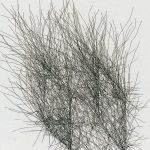
Cube 4
[SIGGRAPH 1989] -
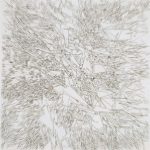
DSCN0779.1CC
[SIGGRAPH 2006] -
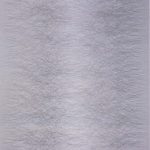
with left and right boundary
[SIGGRAPH 1998] -

b97.9.3
[SIGGRAPH 1998] -

Small_Elements_K
[SIGGRAPH 2005] -
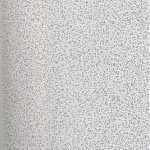
Striche
[SIGGRAPH 2005] -
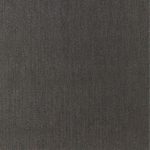
Kreise_7.3sc
[SIGGRAPH 2004] -
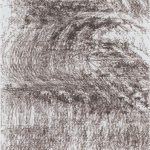
S0_1084-1
[SIGGRAPH 2004] -
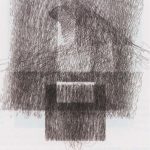
the_bird_facing_left
[SIGGRAPH 2004] -
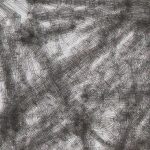
ohne_Titel
[SIGGRAPH 2004] -
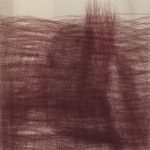
Turm Unter Glas
[SIGGRAPH 2003] -
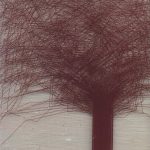
Tree11
[SIGGRAPH 2003] -

Twelve-Nine-Five Out of Two to the Power...
[SIGGRAPH 2003] -
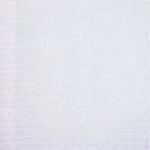
Excerpts from the 1999 War Refugees Coun...
[SIGGRAPH 2001] -

Yellow Strokes
[SIGGRAPH 2001] -
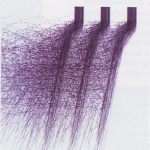
strokes_mi31, tree11, baum_V14
[SIGGRAPH 2002]


